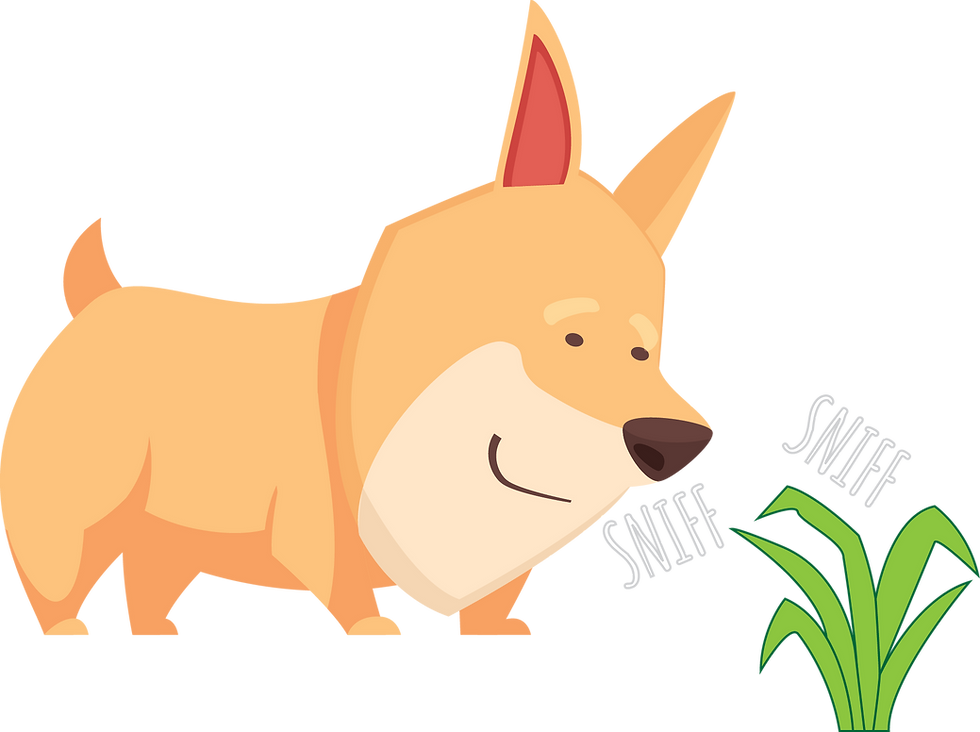Curving....
- craig630
- Sep 23, 2022
- 3 min read
..Why do a lot of dogs do it around other dogs?

‘Curving’ is a clever strategy that dogs use to create space! A curved approach is less intrusive than a direct, head-on greeting (which can be seen as confrontational) because it involves a subtle change of direction.
Curving buys the dogs a little time to assess one another.
Watch your dog’s nostrils twitching as he nears another dog; both canines will be communicating with each other via scent
Curving is also "polite" in the dog world, by approaching side on or at an angle, a dog reveals more of his body, which gives the other dog a better opportunity to ‘read’ his body language (than a head-on approach would). For example, a curved approach means the other dog can clearly see:
How tense or how relaxed the other dog’s body posture is...The more relaxed the better of course. Where the dog’s weight is centered This is all part of assessing mood, confidence and friendliness. Weight backwards could indicate the dog is a bit apprehensive, ready to go into ‘flight’ mode.
The dog’s tail position – is it upright, down or mid-way? Is the tail wagging fast, slow or like a windmill? It gives more time for each dog to read the other’s facial expressions. Just like us, dogs can raise their eyebrows, frown and tense their facial muscles!
The dog’s ear position – are they pricked up, tucked back, positioned forward or hanging down? Obviously a lot of this depends on the breed, some dogs appear more aloof than others, boxers unintentionally do for example, because of their default body posture. Very much upright with their big chest puffed out.
This is why cropped ears and tail can cause issues for the other dog when trying to make an assessment.
And what about the eyes? Is the dog giving a hard stare or does he have soft, squinty eyes indicating friendliness.
Dogs have a whole repertoire of body language signals; curving is just one of them. Curving is a subtle technique but a vital part of good dog greetings.*
This is why I always say to owners that a lot of dog greetings go badly because as humans we force dogs to walk straight towards each other, on a piece of rope no less. The dog feels constricted and isn't given time to make an assessment or create space for themselves if they feel they need it.
There are more issues that arise from our behaviour:
We often have a tight leash when they greet, this does not allow for a natural relaxed greeting and movement, for an apprehensive dog this can really ramp up the tension.
Keep the leash slack and both handlers should move with the dogs as they greet.
Furthermore, people often stand and chat for too long with the other dog handler and things begin to escalate as they pay no attention to what their respective dogs are doing and often obvious signs of discomfort they're conveying. The dog then feels forced to take action when the pressure has taken its toll and they feel trapped.
An initial dog greeting should be much like a quick handshake, 2 seconds at each end then come away again to regroup.
Some dog's are poor at reading body language and will pester the other dog until there is a reaction.
Some dogs prefer not to greet other dogs at all. Mine has virtually interest and will turn her head away after a brief sniff, if she bothers to sniff them at all. That's fine and I respect that.
Dogs obviously cannot use words to communicate how they're feeling, so next time you stop to greet another dog handler, just be mindful of how your dog is behaving. You can help him out and speak for him... be his lifeline to prevent him having to resort to extreme measures.








Comments